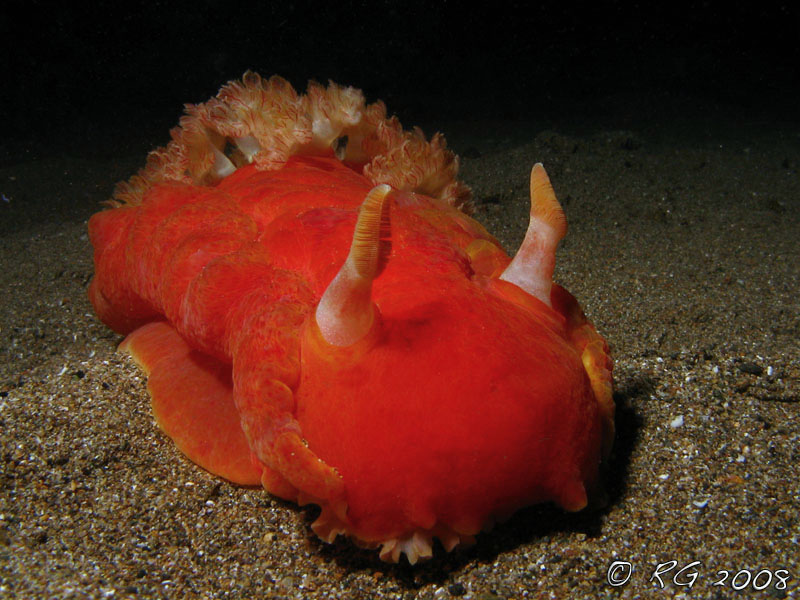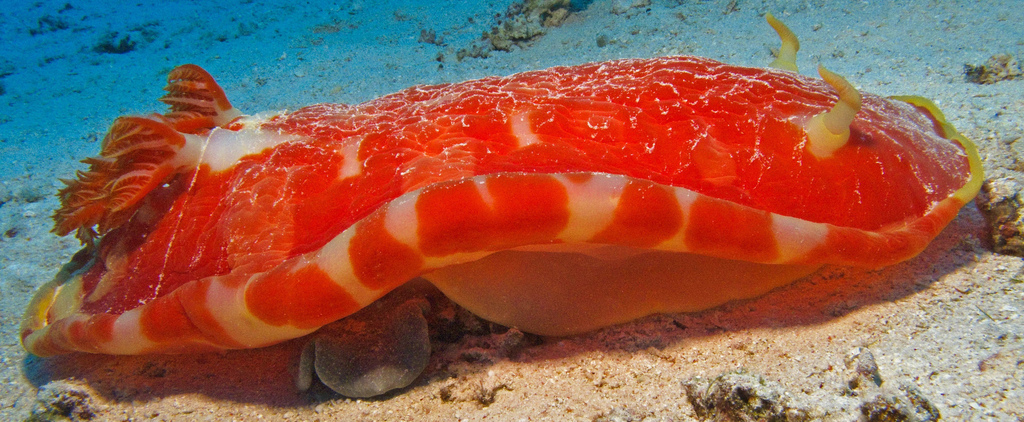Form and function
 Rhinophores act much like the human nose and act as a sensory
organ by helping the nudibranch locate food and even possibly
find its mate since they do not have eyes. Rhinophores are two
hornlike structures/tentacles found on the head of a nudibranch.
Just as mentioned before, the Spanish dancer does not have eyes.
Instead they have embedded sensory organs that allow them to
distinguish light and dark. The color of the dancer’s body
changes in response to light and dark as well. During light
hours, the color of the body can be pink to crimson color with
white markings, and at night it will appear pinkish-red and
blotchy (Maui Ocean Center, 2013). In response to danger, the
Spanish dancer has an advantage over other nudibranchs in that
it can swim away. Just how does this organism swim? The Spanish
dancer enables itself to swim through sweeping dorsoventral
flexations, sending synchronous waves through the nudibranchs
body, or mantle (Pawlik et al. 1988). This organism is limited
however in that it can only swim for short periods of time. To
see how they swim check out this link.
http://www.youtube.com/watch?v=V6H01cUSpfQ
Rhinophores act much like the human nose and act as a sensory
organ by helping the nudibranch locate food and even possibly
find its mate since they do not have eyes. Rhinophores are two
hornlike structures/tentacles found on the head of a nudibranch.
Just as mentioned before, the Spanish dancer does not have eyes.
Instead they have embedded sensory organs that allow them to
distinguish light and dark. The color of the dancer’s body
changes in response to light and dark as well. During light
hours, the color of the body can be pink to crimson color with
white markings, and at night it will appear pinkish-red and
blotchy (Maui Ocean Center, 2013). In response to danger, the
Spanish dancer has an advantage over other nudibranchs in that
it can swim away. Just how does this organism swim? The Spanish
dancer enables itself to swim through sweeping dorsoventral
flexations, sending synchronous waves through the nudibranchs
body, or mantle (Pawlik et al. 1988). This organism is limited
however in that it can only swim for short periods of time. To
see how they swim check out this link.
http://www.youtube.com/watch?v=V6H01cUSpfQ
